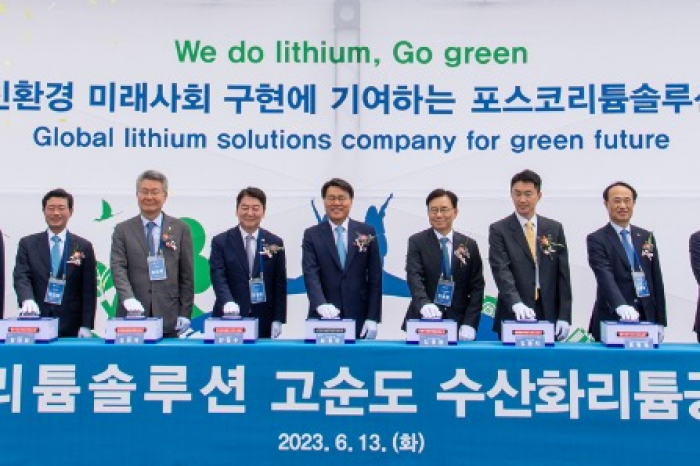
Posco breaks ground
Submitted by:
Andrew Warmington
Posco Holdings has held the groundbreaking ceremony for the first lithium hydroxide factory in South Korea, at the Yulchon Industrial Complex in South Jeolla province. The company will invest over $450 million up to completion in 2025. It will be able to produce about 25,000 tonnes/year, enough for some 600,000 electric vehicles.
Yulchon is already home to the Posco Future M subsidiary’s cathode material facility. A lithium ore plant is also being built there and it will eventually host a secondary battery material facility.
The new lithium hydroxide plant is part of the second phase of investment in the production of 25,000 tonnes/year of lithium carbonate raw material at the Hombre Muerto salt flat in Argentina. Posco acquired this in 2018 and is now operating the primary and secondary processes. It aims to quadruple production by 2028.
Recently, Posco Future M and General Motors (GM) announced that they would start a second phase of investment to increase the capacity of their North American cathode joint venture, Ultium CAM, at Becancour, Quebec. They aim to complete the expansion of plant, whose initial capacity in 2024 will be 30,000 tonnes/year, and build a new spherical graphite plant by 2026.
This reflects GM’s plans to produce 1 million EVs/year by 2025 and to establish four battery cell joint factories in the US, with combined capacity of 160 GWh Ultium CAM has also signed a large contract to supply high-nickel cathode materials, which will be produced in the expanded line, to Ultium Cells, the battery joint venture of GM and LG Energy Solution. This will be worth around $10 billion.
In May, the Posco Future M board approved a plant to invest €413 million to build a 46,000 tonnes/year high-nickel NCMA cathode plant at Pohang. Combined with existing capacity in Korea and China, this will bring its total cathode capacity to 271,000 tonnes/year by 2025, not including the GM joint venture and another in China.
